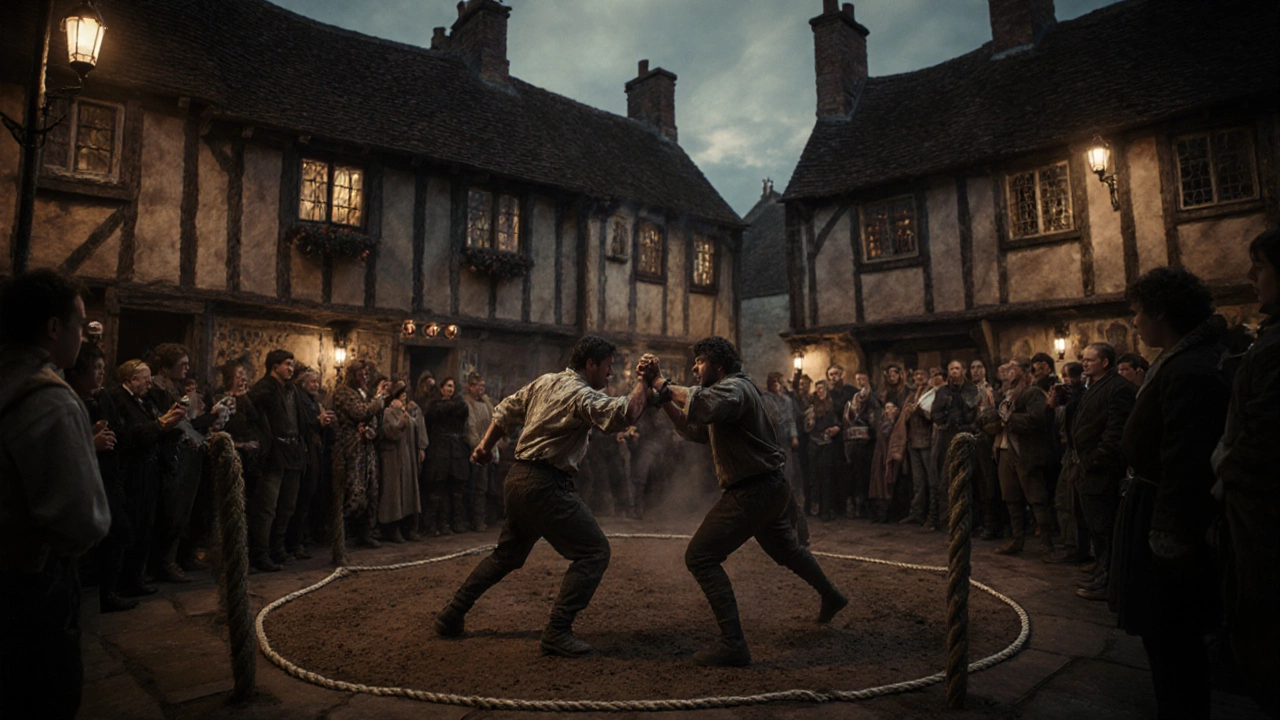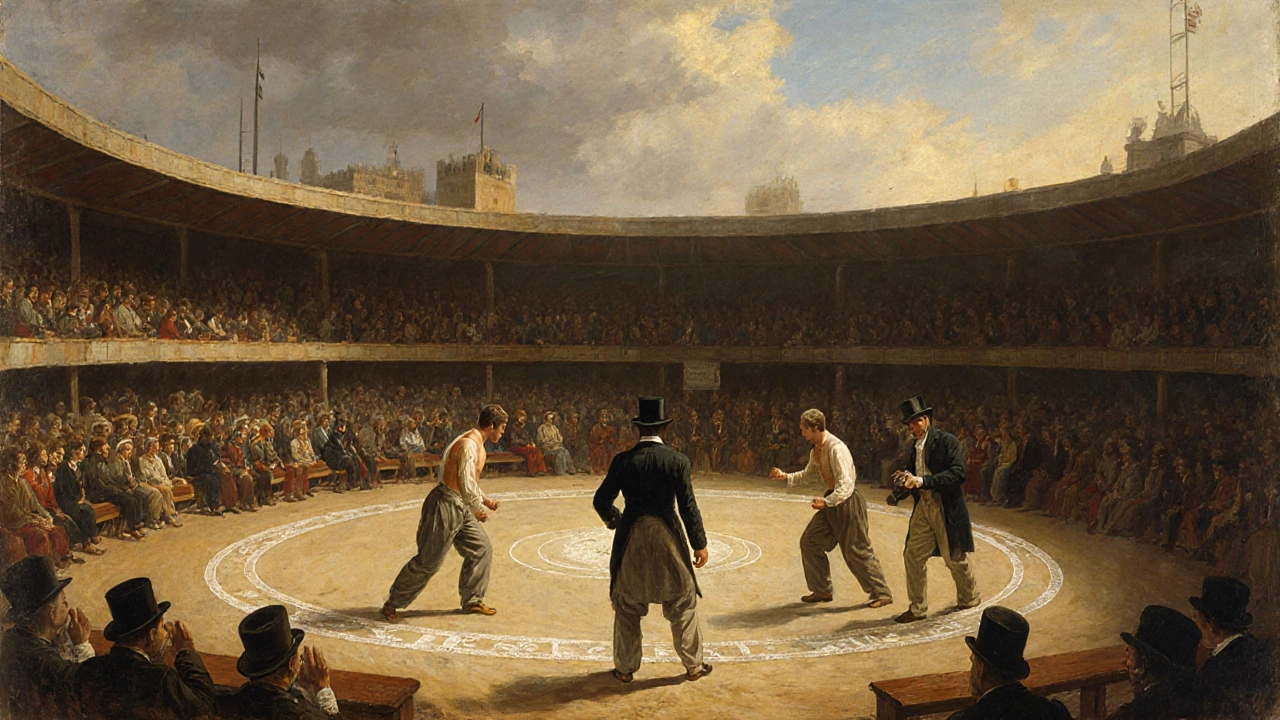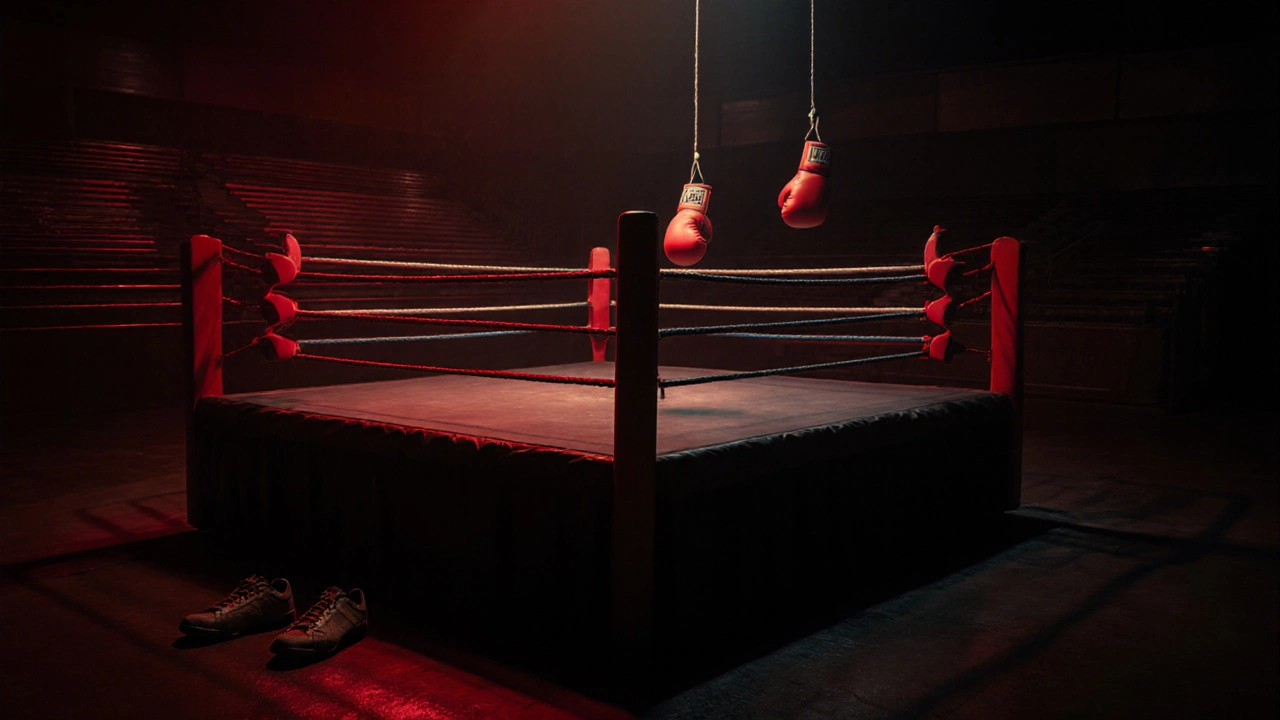Why Do We Call It Boxing? The Surprising Origins of the Name

Boxing Name Origins Quiz
Test Your Knowledge
How well do you understand why the sport is called "boxing"? Take this quiz to find out!
Question 1
Why is the sport called "boxing" rather than something like "gloving" or "pugilism"?
Ever wonder why we call it boxing? It sounds simple - you wear gloves, punch, and win by knockout or points. But the word itself? That’s got a wild history. It’s not just about fists. It’s about ropes, rules, and centuries of change. If you’ve ever watched a match and thought, ‘Why not just call it fistfighting?’ - you’re not alone. The answer takes us back to ancient Greece, through bare-knuckle brawls in London pubs, and into the modern ring with a name that stuck for reasons no one expected.
The word ‘boxing’ didn’t come from gloves
People assume ‘boxing’ comes from the gloves. It doesn’t. The word actually comes from the verb ‘to box,’ meaning to strike with the fist - and that goes back to Middle English in the 1300s. Back then, ‘box’ meant a sharp blow, like a slap or a punch. Think of it like ‘box on the ear’ - a common phrase in old English literature. It wasn’t about sport. It was about violence. And it stayed that way for hundreds of years.
When organized fighting started appearing in England in the 1600s, it wasn’t called ‘the sweet science.’ It was called ‘prizefighting.’ Fighters didn’t wear gloves. They fought bare-knuckled, sometimes for hours. The crowd would gather in fields or barns, betting on who’d break a jaw first. So why did ‘boxing’ become the name? Because it was the simplest way to describe what happened: people boxed. No fancy terms. No Latin. Just ‘boxing.’
The London Prize Ring Rules changed everything
In 1838, the first official rules for bare-knuckle fighting were written. They were called the London Prize Ring Rules. For the first time, there was a defined ring - a circle drawn on the ground, usually 24 feet across. Fighters had to stand inside it. A round ended when someone went down. Then they had 30 seconds to get back up. No holding. No hitting below the belt. No wrestling. Just fists.
This was the moment ‘boxing’ started to feel like a sport. Not just a brawl. The ring became central. And the name? It stuck because people started saying, ‘He’s going to the ring to box.’ The word wasn’t about gloves. It was about the space. The circle. The place where you boxed.
Even when gloves were introduced later, the name didn’t change. Why? Because the ring was still there. The structure was still the same. The word ‘boxing’ had already taken root in the public mind. Changing it would’ve been like calling basketball ‘jumping with a ball.’
Gloves came later - and almost didn’t stick
The Marquess of Queensberry Rules, published in 1867, pushed for padded gloves, three-minute rounds, and no wrestling. This was the birth of modern boxing. But here’s the twist: the gloves weren’t added for safety. They were added because wealthy patrons wanted to make the sport ‘respectable.’ They didn’t want to see blood on the streets. They wanted gentlemen to watch it in clubs.
At first, many fighters hated the gloves. They said they slowed the game down. Made it harder to knock someone out. Some refused to wear them. But the rules won. And with them, the name. Even though gloves became the visual symbol of boxing, the name didn’t shift to ‘gloving’ or ‘punching with pads.’ Why? Because the ring was still the center of attention. The action was still called ‘boxing.’

Other cultures had their own versions - but didn’t call it boxing
The ancient Greeks had pugilism - a brutal form of fistfighting with leather straps wrapped around the hands. They even included it in the Olympic Games in 688 BCE. But they didn’t call it ‘boxing.’ The Romans had a version with metal-studded gloves called cestus - so deadly, fighters sometimes died in the arena. Still, no one called it boxing.
China had Leitai fighting. India had Musti-yuddha. Japan had sumo, which sometimes included striking. But none of these cultures used the English word. ‘Boxing’ is a British label. It spread because of empire. British sailors, soldiers, and colonists carried the term around the world. By the 1900s, ‘boxing’ was the global word for the sport - even in countries that had their own traditions.
The ring is still the reason the name stuck
Today, you’ll see the word ‘ring’ used everywhere in boxing. ‘Step into the ring.’ ‘He’s a ring veteran.’ ‘The ring is where champions are made.’ Even TV commentators say, ‘He’s boxing well tonight.’ Not ‘punching’ - ‘boxing.’
The name survived because it’s not about the fists. It’s about the space. The ritual. The structure. You don’t just throw punches. You enter a defined area, follow rules, and fight under a set of traditions. That’s what makes it boxing - not the gloves, not the sport, but the whole system built around the ring.
Think of it like chess. You don’t call it ‘moving little wooden pieces.’ You call it chess. Same here. The gloves, the rounds, the referee - they’re all part of the system. But the name? It’s rooted in the most basic thing: you box. In the ring. That’s it.

Why not call it something else?
People have tried. ‘Pugilism’ is the old technical term. It sounds fancy. But it’s too long. Too Latin. Too academic. ‘Fistfighting’? Too crude. ‘Gloving’? Sounds like a cleaning product. ‘The Sweet Science’? That’s a nickname, not a name.
‘Boxing’ is short. It’s clear. It’s been used for 400 years. It doesn’t need to change. Even if the sport evolves - new weight classes, new tech, new fighters - the name stays. Because it’s not about what’s on your hands. It’s about where you stand when you fight.
It’s not just a sport - it’s a word that outlived its origins
Most sports names come from what you do: football, basketball, volleyball. But boxing? It comes from what you do in a place. That’s unusual. It’s like calling tennis ‘court’ or swimming ‘pool.’ The name doesn’t describe the action - it describes the context.
That’s why ‘boxing’ stuck. It wasn’t chosen for elegance. It wasn’t designed by marketers. It was chosen by crowds in 17th-century England who watched men hit each other in a circle and said, ‘That’s boxing.’ And now, centuries later, we still say it the same way.
What makes boxing different from other striking sports?
Compare it to kickboxing or Muay Thai. Those names describe the moves: ‘kick’ + ‘boxing,’ ‘Thai’ + ‘fighting.’ They’re descriptive. Boxing? It’s not. It’s a relic. A word that survived because it was simple, not because it was perfect.
That’s why it’s so powerful. The name doesn’t limit it. You can be a technical boxer, a brawler, a counterpuncher - and you’re still boxing. The name doesn’t care how you win. It just says: you’re in the ring. You’re boxing. And that’s enough.
